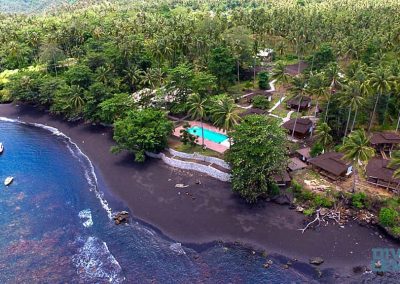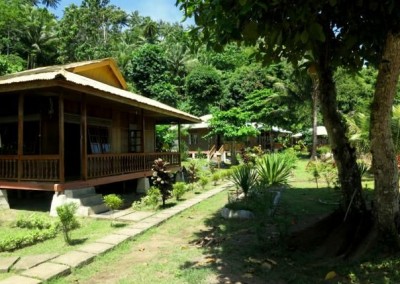Lembeh Strait – The world’s best muck diving
Lembeh Strait, 1.5 hours from the center of Manado city, is a completely different type of diving from that of Bunaken National Park or Bangka Island. Lembeh Strait offers a variety of diving, including some coral reefs and wrecks; however it is best known for the small and difficult to find creatures that inhabit the world of muck. It is “muck diving” at it’s finest.
While general dive locations throughout the world can easily be recognizable by cosmopolitan divers, specific dive sites/reefs are more obscure. A few, such as Bloody Bay Wall, the Blue Corner, Pixie Pinnacle, Ras Muhammad, the Cod Hole and Palancar are familiar to many, andHair Ball has recently joined their ranks. Hair Ball and Police Pier in the Lembeh Straits house many subjects that have starred in coffee table books, dive magazines and videos, not to mention National Geographic and BBC specials.
We currently represent several resorts that are based within Lembeh Strait, please see below.
Lembeh Strait
Lembeh Strait Dive Resorts
Lembeh Strait is not a location to see the large pelagics, but occasionally sharks, turtles, Napoleon wrasses and humphead parrotfishes can be spotted there. One guest’s week-long visit to Lembeh Strait in 2004, viewed and identified the following fishes and critters: many species of frogfishes including the hairy frogfish; many species of pipefishes and several species of ornate pipefishes and seahorses including the pygmy seahorses; several species of flounders including the cockatoo flounder; several species of scorpion fishes and lionfishes; several species of leaf scorpionfishes and waspfishes including cockatoo waspfishes; spiny devilfishes (Inimicus); Japanese flatheads; reticulate stargazers; longhorn cowfishes; Pegasus sea moths; lots of porcupine puffers and gurnards; both adult and juvenile examples of barramundi, spotted sweetlips and pinnate batfishes (spadefishes); Banggai cardinalfishes; several species of morays and snake eels; several species of octopuses including the mimic octopus & wunderpus,
bottom-dwelling cryptic octopus with similar behaviors; several species of squids and cuttlefishes including lots of flamboyant cuttlefishes, bobbit worms, and lots of species of urchins and sea cucumbers including the very active burrowing sea cucumber (Neothyonidium).
Lembeh Strait data was provided with the assistance of
Mel Cundiff
ECOLOGY AND EVOLUTIONARY BIOLOGY
334 UCB UNIVERSITY OF COLORADO
[email protected]
spot.colorado.edu/~cundiff






